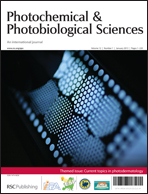The effects of ultraviolet radiation, visible light, and infrared radiation on cutaneous erythema, immediate pigment darkening, persistent pigment darkening, and delayed tanning are affected by a variety of factors. Some of these factors include the depth of cutaneous penetration of the specific wavelength, the individual skin type, and the absorption spectra of the different chromophores in the skin. UVB is an effective spectrum to induce erythema, which is followed by delayed tanning. UVA induces immediate pigment darkening, persistent pigment darkening, and delayed tanning. At high doses, UVA (primarily UVA2) can also induce erythema in individuals with skin types I–II. Visible light has been shown to induce erythema and a tanning response in dark skin, but not in fair skinned individuals. Infrared radiation produces erythema, which is probably a thermal effect. In this article we reviewed the available literature on the effects of ultraviolet radiation, visible light, and infrared radiation on the skin in regards to erythema and pigmentation. Much remains to be learned on the cutaneous effects of visible light and infrared radiation.

You have access to this article
 Please wait while we load your content...
Something went wrong. Try again?
Please wait while we load your content...
Something went wrong. Try again?


 Please wait while we load your content...
Please wait while we load your content...